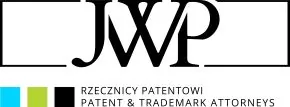The industrial economy has been inextricably bound up with the development of innovative solutions, with increasing competition and developing third world countries putting constant pressure on the development of new and ever more complex technologies. As is the case in other fields of technology, there are also technical problems in the widely-understood area of information technology that simply cannot be solved without the help of high-level programming.
The high level of abstraction found in current programming languages and the multitude of libraries and frameworks make the work of developers easier and faster without a shadow of a doubt. It is only indirectly that the high-level code is addressed to humans (the code is read), but the direct (final) recipient of the machine code produced through the compilation process is the microprocessor, i.e., a "machine" and not a human. Because of this multifaceted nature, the legal protection of computer programs covers many aspects and is a complex problem.
Without going into the intricacies of how copyright and other rights have developed, the important point is that computer programs can be protected as literary works within the meaning of the Berne Convention, but it is a mistake to expect protection for technical aspects related to software under copyright and related rights. After all, as indicated above, it is the microprocessor ("machine") that is the addressee of the instructions expressed in the language used by the developers and not a human being as is strictly the case with a literary work.
A computer program can in many cases perform the same or a similar function as other tools, carrying out some sort of actions and activities on tangible objects, i.e., objects of the world of technology. Software to ensure the correct operation of devices equipped with microprocessors, i.e., the software that developers create, interacts without a shadow of a doubt with matter and affects technical elements. Therefore, the intellectual property embedded in software may also be strictly protected under Industrial Property Law, which can be represented by a patent, a utility or industrial design, or even a trademark. Software can also be protected under the Act on Combating Unfair Competition or, for example, the Act on the Protection of Databases, so there should be no doubt about the fact that the protection of software is a complex problem involving many areas of law.
What is important is not the protection itself but the prohibitive element in relation to competition
For many years, a kind of legal fiction about inventions existed in the doctrine, because there were provisions introduced within Industrial Property Law that excluded computer programs from the understanding of the term "invention". Consequently, under the Polish Industrial Property Law, computer programs in any form were excluded from patent protection. This raised many doubts and controversies because, as indicated above, software can interact with objects of the world of technology.
The amendment to the Industrial Property Law has introduced favourable changes that make it possible to obtain a patent in Poland for computer-aided solutions or solutions implementing related software under the Industrial Property Law. Entrepreneurs have been given the opportunity to enrich their extensive protective resources with an additional tool, which allows them to be even more effective not only in protecting their products and solutions, but also in prohibiting other actors from engaging in activities that fall within the scope of the legally protected activity of the right holder and the temporarily obtained monopoly.
Finally, it is not without significance that industrial property rights form part of a company's assets, and are heritable and transferable rights, and thus make it possible to secure your own or your company's products and solutions even more effectively.
How, then, is it possible for an entrepreneur to protect computer-aided solutions, and does it even make sense?
The term of protection under patent, for example, can be a maximum of 20 years, and in the rapidly changing and developing field being IT, this seems like eternity. Just look at what the digital age looked like 20 years ago, or at how programming languages have been changing dynamically over the years, and new frameworks and associated tools have emerged.
Patent - additional opportunities to acquire and protect investments
Given the time period that the monopoly is granted for, the pace of change and the time required for processing an application (from a few to even a dozen years in extreme cases), most people would respond that there is little point in applying for such exclusive rights. However, it is worth bearing in mind that, according to the social proof theory, when all think alike, no one is thinking very much (Walter Lippmann). Big market players seek patent protection because it offers a completely different and additional opportunity to raise and protect capital. The fact of said protection being scant in the domestic market is not because it does not exist globally and is not worth applying for, but because there is little awareness of how to use such exclusive rights or there are not many actors in the domestic market who can introduce technologies competitively.
One of the more interesting recently obtained exclusive rights may be that for a system for generating linguistically complex messages using neural networks (US11516158B1). There is also a lot of focus on how to generate, view, edit and send advertising, or how to provide location-based advertising services (e.g., WO2010065235A2). Obtaining legal protection in Poland, however, depends on how the software in question is presented and, in particular, how the technical problem and its solution are illustrated. Therefore, a patent attorney will play a key and pivotal role in the successful presentation of the application. Note that when developing a protection strategy, you do not have to limit yourself to filing a national application, you can also opt for the European or international procedure and thus significantly increase your chances of obtaining an exclusive right.
Patent protection gives you an additional opportunity to make profits by licensing and exploiting the patented solution
In light of the changes made to Polish Industrial Property Law, it is important to point out that a computer program is not currently deprived of patentability as long as it produces a "further technical effect", i.e., a technical effect beyond the normal interaction between a program (software) and the computer (hardware) on which it is run, i.e., beyond the normal physical effects. Examples of further technical effects, in light of the currently accepted guidelines, could be, for example, the control of a technical process or the internal functioning of the computer itself or its interfaces, e.g., a method of image compression, restoration of a distorted digital image, encryption of data transmission, solutions for balancing the processor load, etc. So the options for patent protection are numerous.
Protect your databases
Databases can be protected not only under the Database Act. Database management systems are primarily technical systems that are implemented on servers to perform technical tasks such as storing and querying data. Different data structures, methods and effectiveness of both reading and saving data play an important role here. Any methods that increase effectiveness in database management are methods that use technical means within the meaning of industrial property law and so are not unpatentable.
Industrial design - a quick way to protect your IP
Visual protection, i.e., protection of the graphical element (e.g., GUI) of software, under industrial design is another of the exclusive rights that can be obtained under the Industrial Property Law. The graphic layout of the software, i.e., how the information is presented, is many a time a dominant element influencing interactions with the user and is often linked to the functional features of the software, improving the ergonomics and comfort of working with it.
The trademark is fundamental in the market
The name of the software and the logo are equally important and can also be protected, e.g., through trademark. Trademarks are extremely important for advertising and commercial activities, because they are distinctive for products from trusted manufacturers. With its distinctiveness, a trademark can be remembered by consumers, thereby enhancing the value and reputation of a brand. At this point, you should be aware that the right of protection under trademark also has a prohibitive element, making it possible to prohibit third parties from using an identical or similar mark for identical or similar goods and restricting competition in a given territory.
Copyright - protection options
Protection under patent, for example, requires going through an application procedure and having your grounds for obtaining a patent examined, which undoubtedly involves time and additional costs. Copyright protection does not require any application and is free of charge (it arises when the work is created). In this way, you kind of automatically obtain protection against your code being copied, as well as against certain aspects beyond the mere form of the code (e.g., piracy involving reproduction and distribution), but your competition is not prohibited from creating software that will perform the same function. To be able to benefit from the above, it is necessary to obtain exclusive rights under industrial property law, and in this case the only effective way is through the assistance of a patent attorney. Whether you obtain the right will depend greatly on how this is presented before the patent office.
The content of this article is intended to provide a general guide to the subject matter. Specialist advice should be sought about your specific circumstances.

